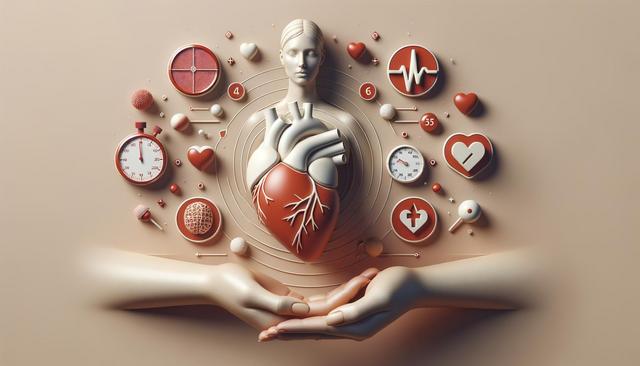What are the signs of heart attacks in women
Recognizing the signs of heart attacks in women can be crucial for early treatment and survival.

Understanding How Heart Attack Symptoms Differ in Women
Heart attacks are commonly associated with sudden chest pain and dramatic collapse, but for many women, the signs can be far more subtle. This difference in symptoms often leads to delayed treatment, as women may not recognize the warning signs or may attribute them to less serious conditions. Unlike the typical crushing chest pain often portrayed in media, women may experience a range of symptoms that are less obvious but equally dangerous. Understanding these differences is essential for timely medical intervention.
One of the key distinctions is that women are more likely to experience symptoms unrelated to chest discomfort. These may include:
- Shortness of breath, even without exertion
- Unusual fatigue that persists for days or weeks
- Discomfort in the neck, jaw, shoulder, upper back, or abdomen
- Nausea or lightheadedness
- Cold sweats or dizziness
These symptoms can develop gradually and may not be immediately alarming. Therefore, it’s important for women to be aware of their body’s signals and consult a healthcare provider if they suspect something is wrong, even if the symptoms seem mild or unrelated to a heart condition.
Chest Pain: Still a Key Symptom, but Often Different
While chest pain remains a common symptom of heart attacks in both men and women, the way it presents can differ significantly among women. Instead of the classic “elephant sitting on the chest” sensation, women might describe their chest pain as pressure, tightness, or a burning sensation. It may also feel more like indigestion or heartburn, which can lead to misunderstandings and misdiagnosis.
In many cases, the chest pain in women:
- Is not as severe or intense as in men
- May come and go rather than being constant
- Can be felt in different parts of the chest or upper body
These variations make it critical for women to pay attention to any unusual sensations in the chest, especially if they are accompanied by other atypical symptoms like fatigue or back pain. Prompt medical evaluation can make a significant difference in outcomes.
Silent Heart Attacks and Atypical Presentations
Silent heart attacks, which occur without noticeable symptoms, are more common in women than in men. These types of heart attacks can go undetected until a medical exam reveals heart damage. In some cases, the only indicators may be subtle signs such as fatigue, mild discomfort, or a feeling of unease.
Women are also more likely to experience atypical heart attack presentations that don’t involve chest pain at all. These can include:
- Sleep disturbances
- Unexplained anxiety
- Digestive issues like nausea or vomiting
- Feeling “off” or sensing that something isn’t right
Because these signs are easily attributed to stress, aging, or minor illnesses, they are frequently overlooked. Awareness of these atypical symptoms is crucial, especially for women with risk factors such as high blood pressure, diabetes, or a family history of heart disease.
Risk Factors Specific to Women
Certain risk factors affect women differently or more intensely than men when it comes to heart health. For example, hormonal changes related to menopause can significantly increase the risk of heart disease. Additionally, conditions such as polycystic ovary syndrome (PCOS), pregnancy-related complications like preeclampsia, and autoimmune diseases are more prevalent in women and can elevate their cardiovascular risk.
Other contributing factors include:
- Smoking
- High cholesterol levels
- Physical inactivity
- Chronic stress or depression
Women may also be less likely to participate in regular health screenings or to recognize early warning signs, which increases the importance of regular checkups and proactive heart health management. Maintaining a healthy lifestyle and monitoring key health metrics like blood pressure and cholesterol can help reduce the risk of heart attacks.
When to Seek Immediate Medical Help
Recognizing when symptoms are serious enough to warrant emergency care can be life-saving. If a woman experiences any combination of chest pressure, unexplained shortness of breath, nausea, or sudden fatigue, it is essential to seek medical attention immediately. Even if the symptoms seem minor or unclear, it’s better to err on the side of caution.
Here are some situations that should prompt an urgent response:
- Persistent discomfort in the chest or upper body
- Difficulty breathing or shortness of breath that worsens with activity
- Sudden onset of nausea, cold sweats, or dizziness
- Unusual fatigue, especially if it interferes with normal activities
Calling emergency services rather than driving oneself to the hospital is recommended, as medical personnel can begin treatment en route. Quick action can prevent further damage to the heart and improve survival rates.
Conclusion: Prioritizing Heart Health Awareness for Women
Women face unique challenges in recognizing and responding to heart attack symptoms, which can often be subtle or atypical. By understanding the signs of heart attacks in women and acknowledging how they differ from traditional symptoms, women can take proactive steps toward better heart health. Regular checkups, awareness of personal risk factors, and immediate action when symptoms arise are essential components of prevention and early treatment. Sharing this information with family and friends can also help spread awareness and potentially save lives.